The 1980s gave us some truly memorable television, from prestige dramas to groundbreaking comedies that we still celebrate today. But nestled between “Hill Street Blues” and “Cheers” were those guilty pleasure shows that somehow managed to capture massive audiences while being absolutely ridiculous. These were the programs that had us glued to our sets every week, even though we’d never dream of admitting it to our friends or coworkers the next day.
1. The Love Boat
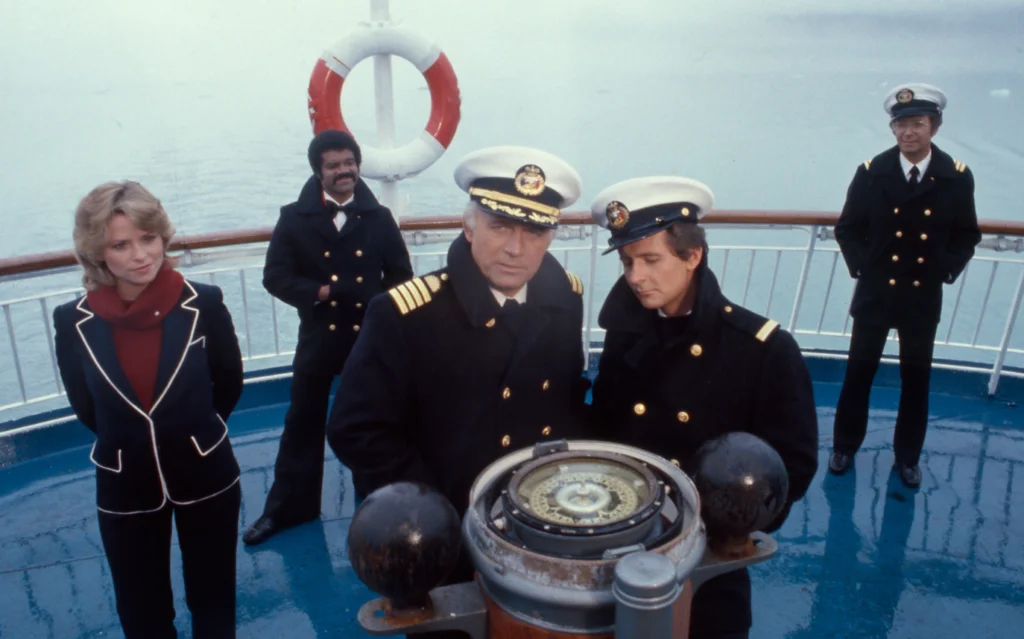
Everyone claimed they were just “channel surfing” when they got caught watching Captain Stubing and his crew navigate romantic hijinks on the high seas. The show’s formulaic approach to storytelling was so predictable you could set your watch by it, yet somehow millions of viewers found themselves invested in whether the guest stars would find true love before docking. ABC knew they had a winner when celebrities started lining up to appear on what was essentially a floating soap opera with a laugh track.
The show’s appeal lay in its complete escapism and the comfort of knowing exactly what you were getting every Saturday night. Gavin MacLeod’s fatherly captain, Lauren Tewes’ perky cruise director, and the rest of the crew became like family members you’d visit weekly. The fact that it ran for nine seasons proves that sometimes people just want to watch beautiful people solve romantic problems while sailing to exotic locations, even if they won’t admit it at the office water cooler.
2. Fantasy Island
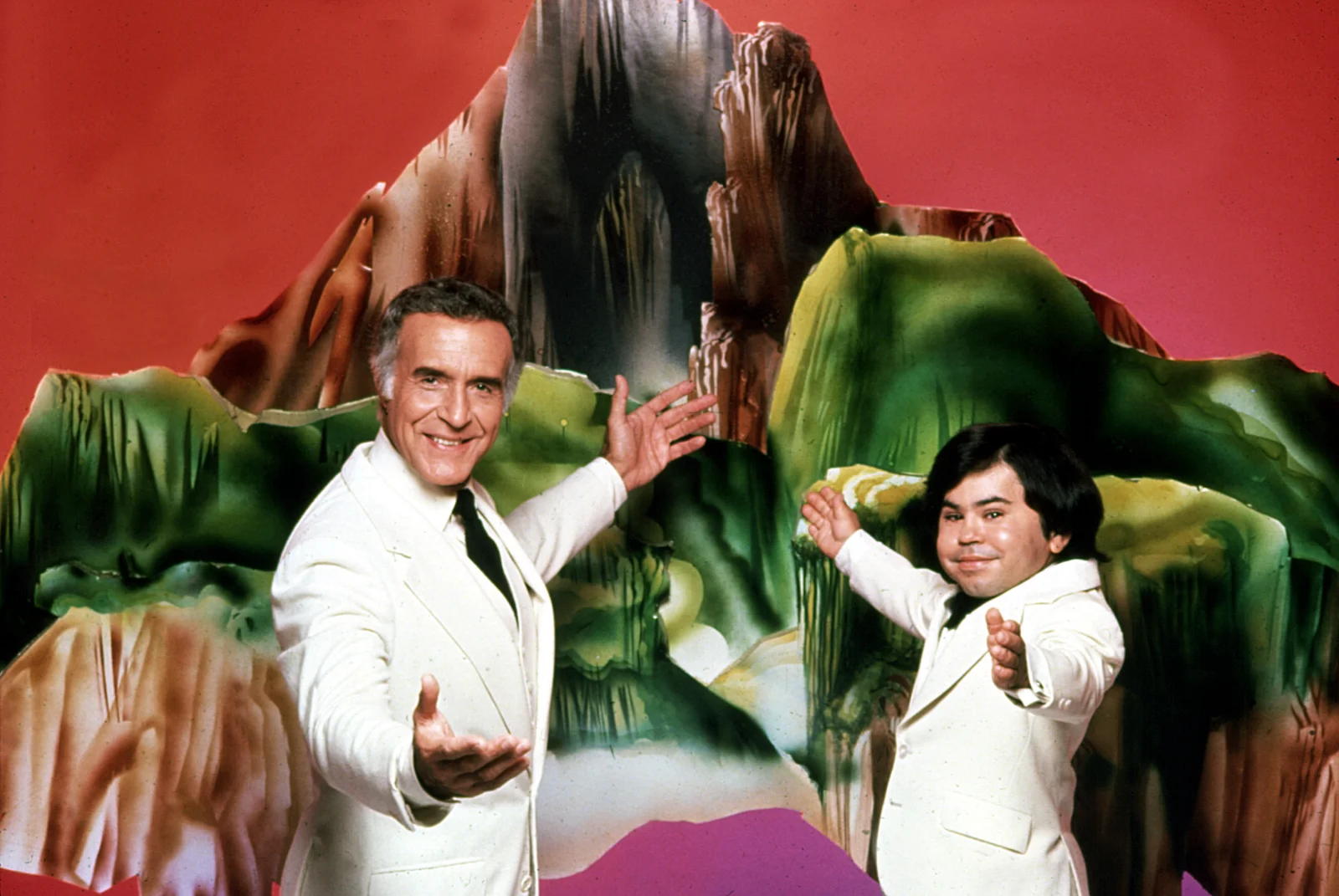
Ricardo Montalban’s mysterious Mr. Roarke and his diminutive assistant Tattoo created a weekly anthology that was part wish fulfillment, part morality tale, and completely bonkers. The show’s premise was so outlandish that admitting you watched it felt like confessing to believing in magic, yet “The plane! The plane!” became one of television’s most recognizable catchphrases. ABC had stumbled onto something special by combining the exotic appeal of a tropical paradise with cautionary tales about getting what you wish for.
What made “Fantasy Island” particularly embarrassing to admit watching was how seriously it took its own ridiculous premise. Guests would arrive with their deepest desires, only to learn profound life lessons through elaborate scenarios that often defied logic and physics. The show’s blend of supernatural elements, moral messaging, and Montalban’s commanding presence in those crisp white suits created a viewing experience that was simultaneously sophisticated and completely absurd.
3. The Dukes of Hazzard
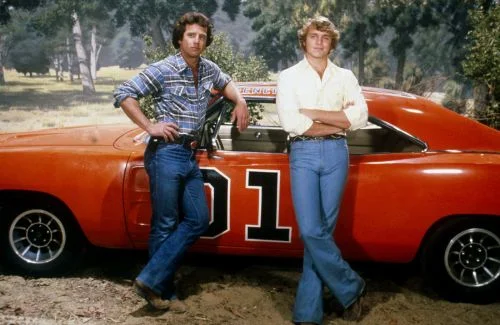
This good ol’ boy car chase show was basically an excuse to watch the General Lee jump over everything in Hazzard County while Boss Hogg schemed and the Duke boys outsmarted corrupt law enforcement. The show’s premise was thin enough to see through, but somehow the combination of high-speed chases, Southern charm, and Catherine Bach in those famous cutoff shorts kept viewers coming back for more. CBS had created the perfect Friday night guilty pleasure that parents could theoretically watch with their kids, even if the show’s relationship with law and order was questionable at best.
The series became a cultural phenomenon that spawned toy cars, lunch boxes, and heated debates about whether it was celebrating or satirizing Southern culture. Adults who should have known better found themselves genuinely invested in whether Bo and Luke would escape Sheriff Rosco’s latest scheme or if Uncle Jesse’s moonshine operation would finally get discovered. The show’s legacy is so complicated that admitting you watched it regularly feels like opening a conversation about things that are better left unsaid.
4. Three’s Company
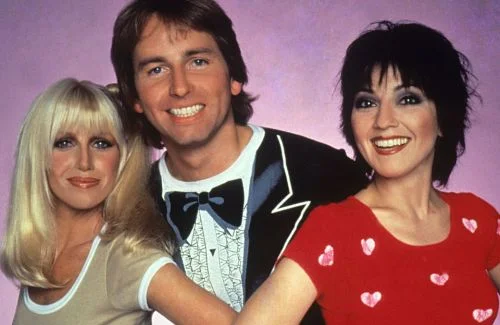
The sitcom that made living arrangements into a weekly source of sexual innuendo and misunderstandings had audiences laughing at jokes they probably shouldn’t have found funny. John Ritter’s physical comedy and the show’s reliance on double entendres created a viewing experience that felt slightly naughty, like you were getting away with something inappropriate. ABC had stumbled onto a formula that kept viewers coming back even though the plots were so predictable you could write them yourself.
What made “Three’s Company” particularly embarrassing to admit watching was how the show treated its female characters and relied on outdated stereotypes for laughs. The series’ approach to comedy often felt like watching your uncle tell inappropriate jokes at family gatherings, yet somehow Ritter’s charm and the cast’s chemistry made it work. The show’s popularity proved that sometimes audiences just want to laugh at silly situations, even if they feel slightly guilty about it afterward.
5. Dallas
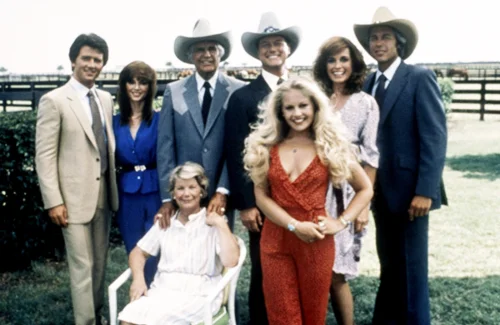
The nighttime soap opera that made “Who shot J.R.?” into a national obsession was supposedly too trashy for sophisticated viewers, yet somehow everyone seemed to know what was happening at Southfork Ranch. The show’s over-the-top melodrama and outrageous plot twists should have been laughable, but Larry Hagman’s portrayal of the villainous J.R. Ewing was so compelling that viewers couldn’t look away. CBS had created a guilty pleasure that felt like eavesdropping on the world’s most dysfunctional wealthy family.
The series became a cultural touchstone that spawned countless imitations and made primetime soap operas a television staple for decades. Adults who prided themselves on watching PBS and the evening news found themselves secretly invested in the Ewing family’s oil business drama and romantic entanglements. The show’s influence on popular culture was so significant that admitting you never watched it was almost more embarrassing than confessing your addiction to the weekly dose of Texas-sized drama.
6. Knight Rider

David Hasselhoff talking to his artificially intelligent car should have been the kind of show that only appealed to teenage boys, but somehow adults found themselves genuinely invested in KITT’s crime-fighting adventures. The series’ blend of high-tech gadgetry and simple good-versus-evil storylines created a viewing experience that was both nostalgic and forward-looking. NBC had created the perfect escapist fantasy for an era when computers were becoming part of daily life but still seemed magical and mysterious.
What made “Knight Rider” particularly difficult to defend was how seriously it took its own absurd premise of a talking car solving crimes with a leather-jacket-wearing former police officer. The show’s special effects were impressive for their time, but the dialogue and situations were so ridiculous that admitting you watched it felt like confessing to believing in fairy tales. The series’ enduring popularity and multiple revival attempts prove that sometimes audiences just want to watch cool cars and simple heroics, even if they won’t admit it in polite company.
7. The A-Team
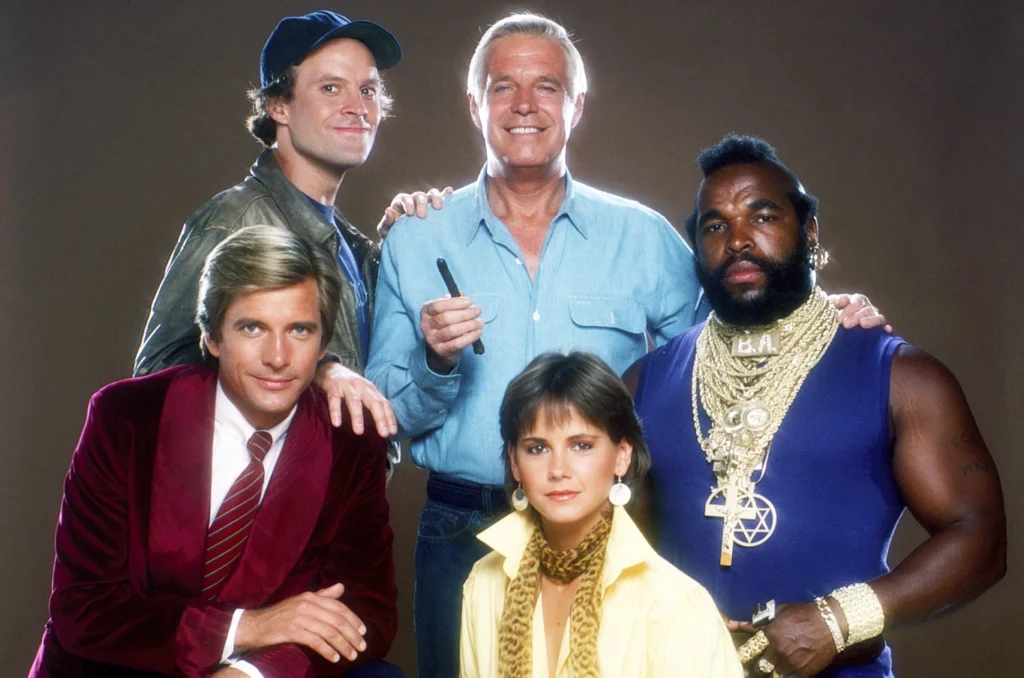
This action-adventure series about military mercenaries helping innocent people should have been too violent and ridiculous for mainstream audiences, but somehow became one of the most popular shows of the decade. The team’s elaborate schemes and Mr. T’s memorable catch phrases created a viewing experience that was part action movie, part comedy show, and completely over the top. NBC had stumbled onto a formula that combined the appeal of “Mission: Impossible” with the accessibility of Saturday morning cartoons.
The show’s most embarrassing aspect was how it managed to feature weekly explosions and gunfights without anyone ever getting seriously hurt, creating a fantasy version of violence that felt safe for family viewing. Adults found themselves genuinely invested in whether Hannibal’s latest plan would work or if the team would escape their latest predicament, even though the outcomes were never really in doubt. The series’ blend of action, humor, and wish fulfillment made it the perfect guilty pleasure for viewers who wanted excitement without consequences.
8. Magnum P.I.
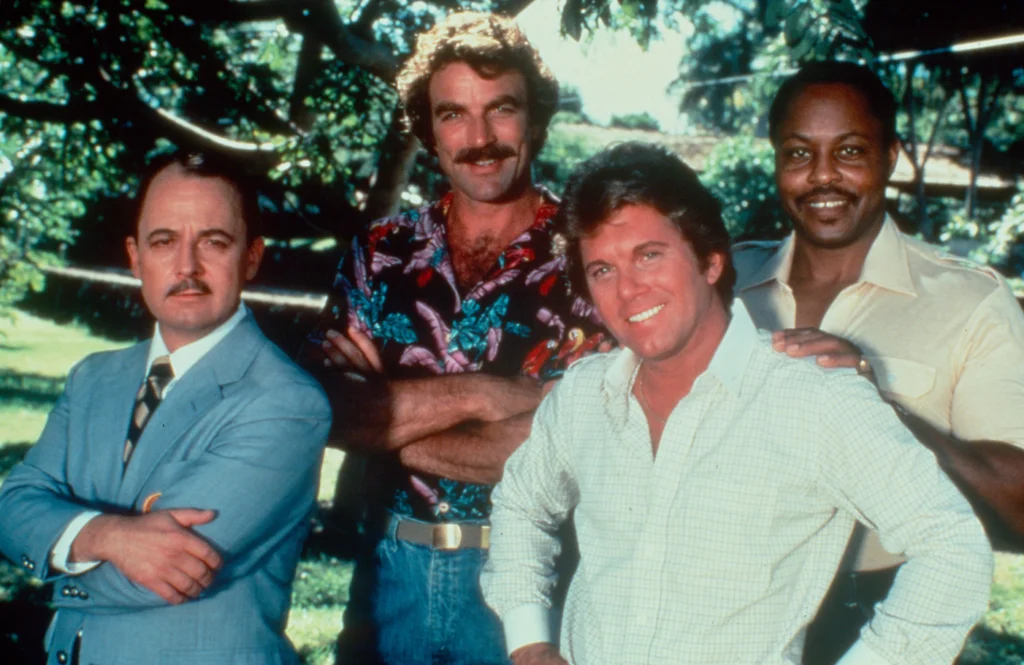
Tom Selleck’s mustached private investigator living in Hawaiian paradise should have been too much of a male fantasy for sophisticated viewers, but somehow became appointment television for audiences who claimed they were just interested in the scenic locations. The show’s blend of detective work, military backstory, and tropical lifestyle created a viewing experience that felt like a vacation from reality. CBS had created the perfect escapist drama for viewers who wanted to imagine themselves solving crimes in paradise.
What made “Magnum P.I.” particularly difficult to defend was how it combined serious dramatic elements with lighthearted adventure in ways that shouldn’t have worked but somehow did. The series’ approach to masculinity and friendship resonated with audiences who might not have admitted to watching what was essentially a grown man playing dress-up in Hawaiian shirts. The show’s popularity proved that sometimes viewers just want to watch attractive people solve mysteries in beautiful locations, even if they feel slightly silly about their viewing choices.
9. Dynasty
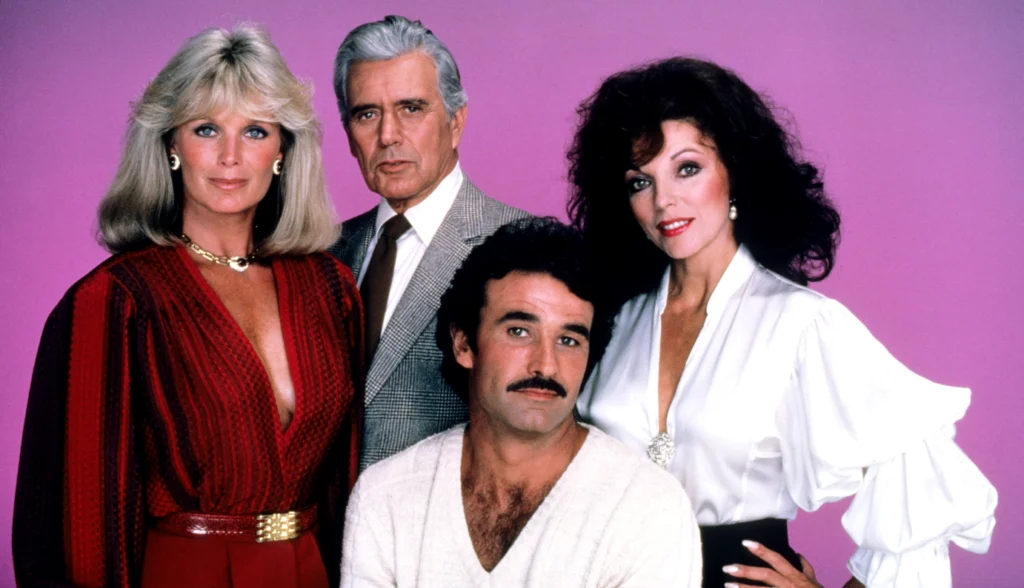
The prime-time soap opera that made shoulder pads and catfights into television gold was supposedly too melodramatic for serious viewers, yet somehow everyone seemed to know about Alexis Carrington’s latest scheme. The show’s outrageous plot twists and glamorous lifestyle porn created a viewing experience that felt like reading tabloid magazines while pretending to browse serious literature. ABC had created a guilty pleasure that made viewers feel sophisticated and trashy at the same time.
Joan Collins’ portrayal of the villainous Alexis became a cultural phenomenon that influenced fashion and popular culture for decades. Adults who prided themselves on their refined taste found themselves secretly invested in the Carrington family’s oil dynasty drama and romantic complications. The series’ influence on television and popular culture was so significant that admitting you watched it became almost a badge of honor, even if you initially felt embarrassed about your addiction to weekly doses of glamorous dysfunction.
10. The Fall Guy
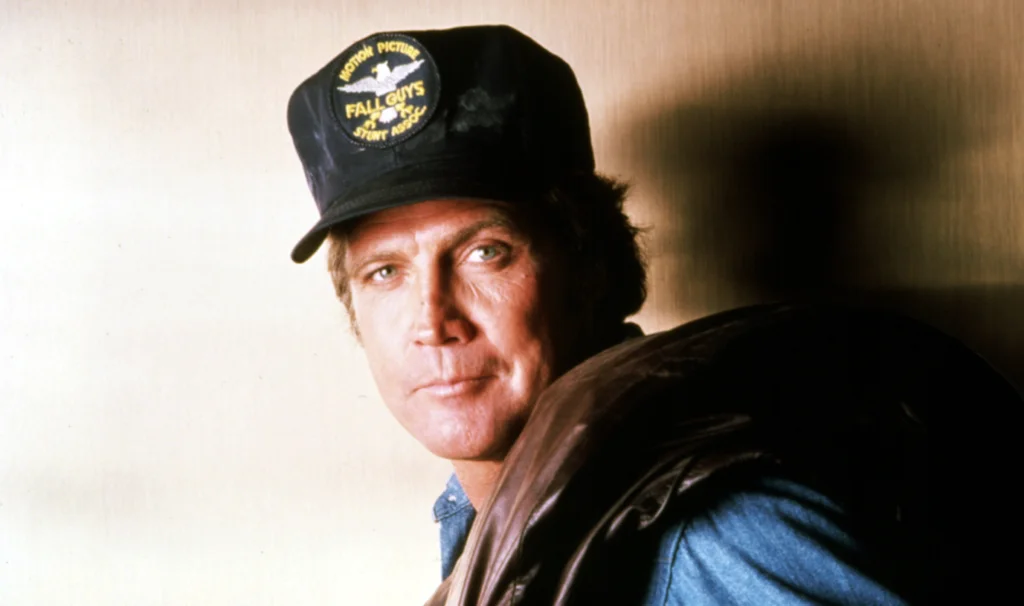
Lee Majors as a Hollywood stuntman who moonlights as a bounty hunter should have been too ridiculous for adult audiences, but somehow became a guilty pleasure for viewers who claimed they were just interested in the behind-the-scenes Hollywood elements. The show’s blend of action sequences, celebrity cameos, and tongue-in-cheek humor created a viewing experience that felt like watching a live-action cartoon. ABC had stumbled onto a formula that combined the appeal of action movies with the accessibility of workplace comedy.
What made “The Fall Guy” particularly embarrassing to admit watching was how it celebrated the very Hollywood excess that serious viewers claimed to despise. The series’ approach to action and adventure was so over-the-top that it felt like watching professional wrestling, yet somehow Majors’ charm and the show’s self-awareness made it work. The show’s popularity proved that sometimes audiences just want to watch spectacular stunts and simple heroics, even if they won’t admit to enjoying such obvious entertainment.
11. Hart to Hart
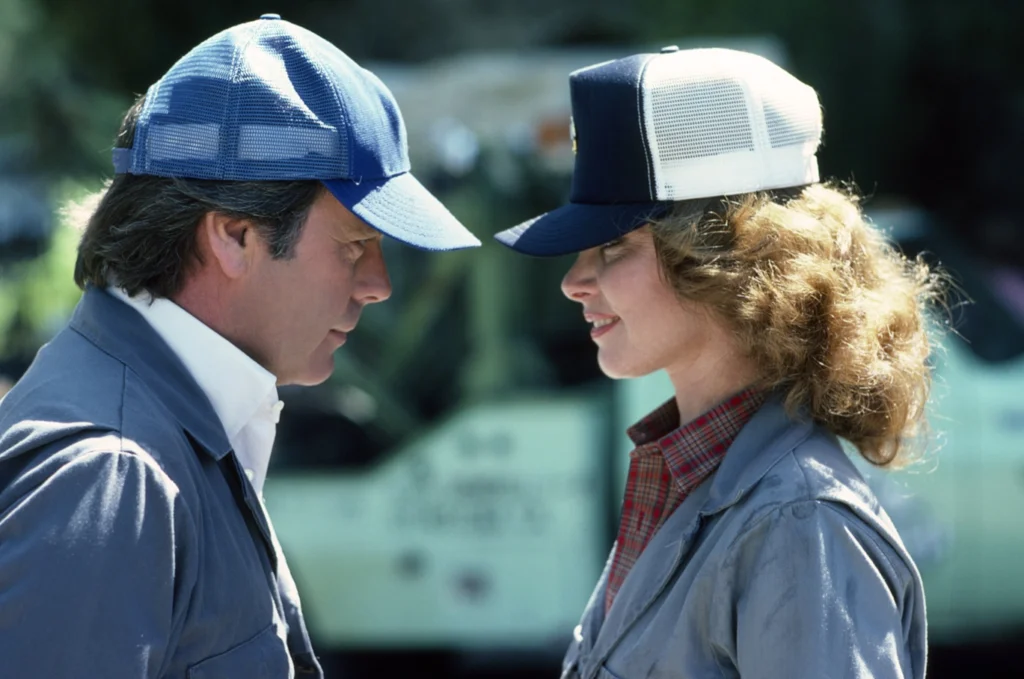
Robert Wagner and Stefanie Powers as wealthy amateur detectives should have been too much of a fantasy for realistic viewers, but somehow became appointment television for audiences who claimed they were just interested in the exotic locations. The show’s blend of mystery solving, glamorous lifestyle, and romantic chemistry created a viewing experience that felt like watching beautiful people play dress-up. ABC had created the perfect escapist drama for viewers who wanted to imagine themselves solving crimes while wearing designer clothes.
The series’ approach to detective work was so unrealistic that it felt like watching a fairy tale, yet somehow the chemistry between the leads and the show’s wish-fulfillment elements made it compelling viewing. Adults found themselves genuinely invested in whether Jonathan and Jennifer would solve their latest case or if their dog Freeway would provide the crucial clue. The show’s popularity proved that sometimes viewers just want to watch attractive couples solve mysteries in beautiful settings, even if they feel slightly ridiculous about their viewing choices.
12. Webster
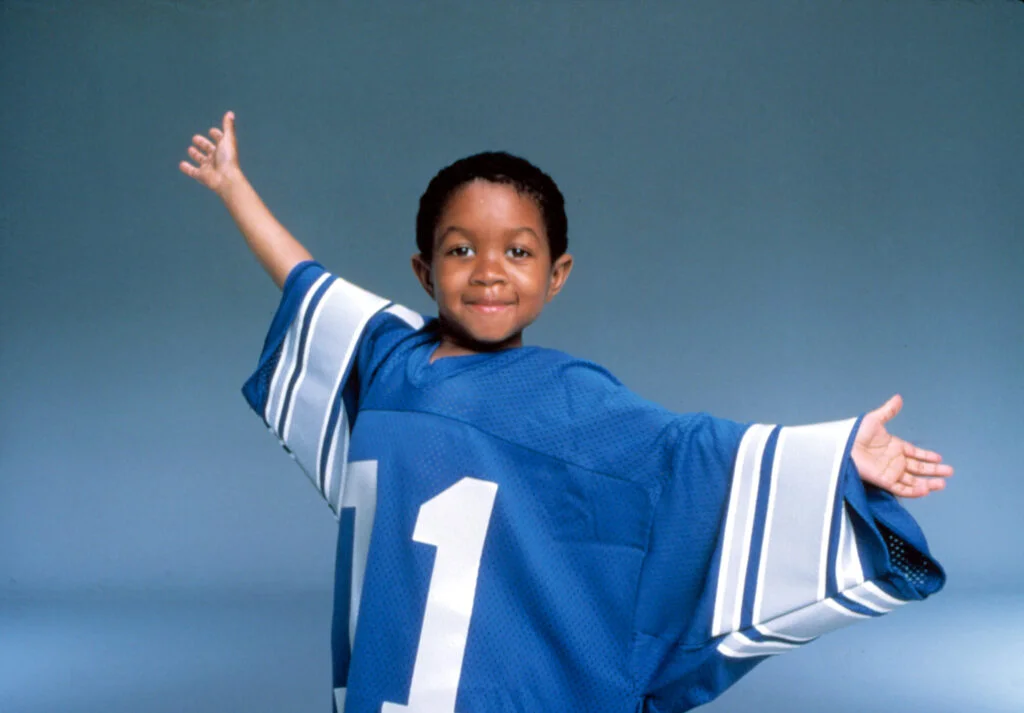
The sitcom about a wealthy white couple adopting a young Black child should have been too contrived and potentially problematic for thoughtful viewers, but somehow became a family viewing staple that adults watched long after their own children went to bed. The show’s blend of family comedy and social commentary created a viewing experience that felt both heartwarming and slightly uncomfortable. ABC had created a guilty pleasure that made viewers feel good about themselves while delivering fairly conventional sitcom entertainment.
What made “Webster” particularly difficult to defend was how it handled serious social issues through the lens of traditional family comedy, creating situations that felt both progressive and safe for mainstream audiences. The series’ approach to adoption, race, and family dynamics was so carefully managed that it felt like watching a public service announcement disguised as entertainment. The show’s popularity proved that sometimes audiences want to feel good about social progress while being entertained, even if they’re not entirely comfortable discussing their viewing habits in mixed company.
Those were the days when television was something you watched live with your family, and guilty pleasures were truly guilty because everyone in the room knew you were choosing to watch something ridiculous. Maybe that shared experience of embracing silly entertainment made us a little more honest about what we actually enjoyed, rather than what we thought we should enjoy. Sometimes the shows we’re embarrassed to admit watching are the ones that brought us the most joy, and there’s something beautifully human about that contradiction.
This story 12 Shows from the ’80s That Everyone Watched—But No One Admits To was first published on Takes Me Back.


